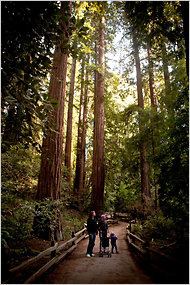For the first time, decades of oil and gas development in the Gulf of Mexico is being challenged in court, on the grounds that the noise of seismic surveys used to pinpoint oil reservoirs has a negative impact on the region’s endangered sperm whales. A consortium of environmental groups, including the NRDC, CBD, and Sierra Club filed a formal notice of intent to sue, because 10 new oil exploration and development project have been approved in recent months without obtaining permits required by the Marine Mammal Protection Act and Endangered Species Act. “Seismic surveys have a vast environmental footprint, disrupting feeding and breeding of wildlife over great distances,” said Michael Jasny, a senior policy analyst at NRDC. “It is intolerable to think that the same species threatened by the Gulf spill will have to contend with the industry’s constant pounding, without any serious attempt to mitigate the harm.”
This legal challenge is similar to those mounted against Navy mid-frequency active sonar training, in that they are designed to assure that the behavioral impacts of seismic survey noise are considered, and that Incidental Harassment Authorizations are issued, with conditions meant to avoid any injury of animals, and minimize behavioral changes. The MMPA and ESA clearly require careful assessment and permitting of any activity that may negatively affect marine mammals or endangered species.
What is unclear, though, is how (if at all) oil and gas exploration activities might change after going through these proper legal challenges. The US Navy now prepares full Environmental Impact Statements for all of its active sonar training areas, and receive IHAs from NOAA, but this legal compliance has not reduced their training activities or succeeded in putting any biologically rich areas off limits–in effect, NOAA has issued the permits after long official assessments that the activities have no significant impacts. LIkewise, the oil and gas industry does have procedures in place to reduce sound output when animals are (very) close, and research into the behavioral effects of noise exposure at greater distances (lower sound levels) is ambiguous, though concerning. See this earlier post about AEI’s work in this area, assessing research about behavioral impacts of moderate noise, including seismic.
The rhetoric from the litigants is surprisingly personal, implying that Gulf of Mexico exploration activity is being ramped up by this administration. “Under Salazar’s watch, the Department of the Interior has treated the Gulf of Mexico as a sacrifice zone where laws are disregarded and wildlife protection takes a backseat to oil-company profits,” said Miyoko Sakashita, oceans director at the Center for Biological Diversity. (See press release) What is unstated, and may in fact be more to the point, is that the Gulf has been a sacrifice zone for decades. The fact is that these animal populations in this truly industrialized sea have been living with seismic exploration, drilling, and lots of ship traffic for many many years; some populations, including sperm whales, appear stable. While some may suggest this reinforces NOAA’s current stance that the activities do not cause any significant impact on wildlife, and others (including AEI) say it’s clearly long past time to consider the cumulative and long-term impacts of this activity on marine life, the villain is not Ken Salazar. It’s our continuing addiction to oil, pushing us to search in ever deeper and more hazardous waters to fill our boundless needs.





